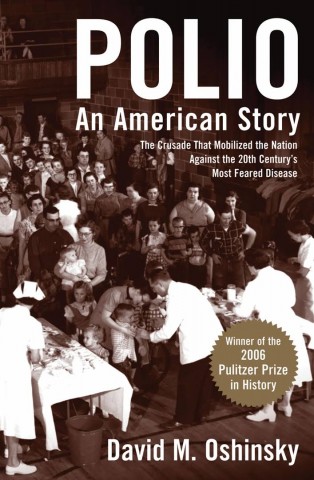NGO lessons from Oshinsky's (2005) Polio: An American Story. Not a summary or review, but some thought provoking quotes:
Strategic planning and framing of the issue:
- "No disease drew as much attention, or struck the same terror, as polio. And for good reason. Polio hit without warning. There was no way of telling who would get it and who would be spared. It killed some of its victims and marked others for life, leaving behind vivid reminders for all to see: wheelchairs, crutches, leg braces, breathing devices, deformed limbs. In truth, polio was never the raging epidemic portrayed in the media, not even at its height in the 1940s and 1950s. Ten times as many children would be killed in accidents in these years, and three times as many would die of cancer. Polio's special status was due, in large part, to the efforts of a remarkable group, the National Foundation for Infantile Paralysis [known to most as the March of Dimes], which employed the latest techniques in advertising, fund raising, and motivational research to turn a horrific but relatively uncommon disease into the most feared affliction of its time." (p. 5)
Being open to innovation from wherever it arises:
- "The best idea, however, came from deep down within the ranks. In the late 1940s, several March of Dimes chapters had tried simple house-to-house solicitations, with encouraging results. Volunteers raised funds quickly by knocking on the doors of the people least likely to turn them down - their neighbors and their friends. In 1950 the local chapter in Maricopa County, Arizona, took this idea a step further. On January 16, at exactly 7:00 P.M., the city of Phoenix came alive. Sirens wailed, car horns sounded and searchlights swept the sky. Women appeared carry shopping bags and Mason jars. Their job was to canvass each neighborhood in the city, targeting private houses, apartments, even at the downtown hotels… advertisements had been placed in newspapers and in store windows, on billboards and on radio… Thus was born the Mothers' March on Polio… Why was the idea so successful? One reason, chapter officials noted, was that it appealed to the movement's natural constituency… Another reason was simplicity… The National Foundation took notice. Within weeks, it had announced plans for a countrywide Mothers' March in 1951, based on the Phoenix model but controlled from the top." (p. 87-88)
Identifying the institutional barriers, and a willingness to reinvent the model:
- "Weaver saw polio research as applied science – seeking a specific solution to a particular problem. For him, the solution to polio lay in a successful vaccine, and the problem in developing on lay in the foundation's obvious failure to lead. For years, its grantees had been inching along on disparate, often esoteric projects, ignorant of each other's findings, and painfully slow to challenge the accepted truths about the disease. Not everyone fit this mold, but there were too many who did, Weaver thought. It was time for a change." (p. 113)
The legacy of errors:
- "More than 200 polio cases were traced to six contaminated lots of vaccine. The victims included 79 vaccinated children, 105 family members, and 20 community contacts. Most were severely paralyzed; eleven people died. The rules for producing polio vaccine were quickly amended… The additions proved remarkably successful. There would be no more Cutter incidents. The Salk vaccine was safe and would remain that way, though public confidence was slow to return." (p. 237)
On leadership and vision:
- "Bold leadership by a single philanthropy, the National Foundation for Infantile Paralysis, would turn the fight against a cruel, if relatively uncommon, children's disease into a full-fledged crusade against an insidious public enemy, with the Foundation employing the latest advances in advertising, fund-raising and public relations to help guide the way. Bold leadership would bring together a band of contentious researchers, provide them with a place of attack, subsidize their efforts, force them to pool their findings, and – yes – favor the one among them who showed the greatest urgency in working toward a vaccine. Bold leadership would direct the largest health experiment in American history, the Salk vaccine trials of 1954, involving almost two million children and several hundred thousand adult volunteers. Bold leadership would give the people what had been promised to them in return for their continued support: a nation free of polio, a safer place in which to live." (p. 286)
1577 Hits

